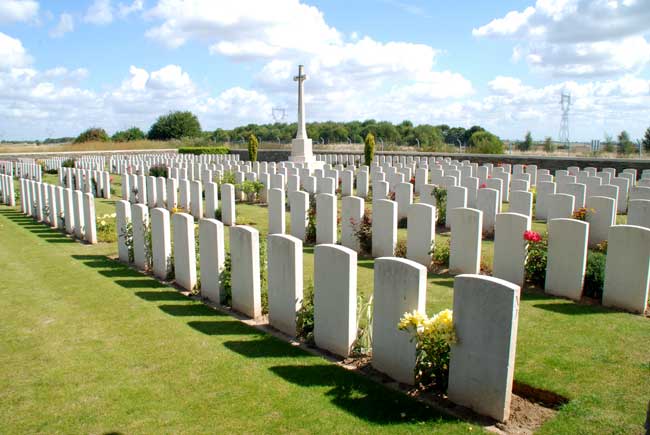Benjamin Charles Bailey
Date of birth: 1889
Date of death: 29.8.1918
Area: Lofthouse Gate
Regiment: Royal Field Artillery
Family information: Husband of Alice Gertrude Bailey nee Horner
Rank: Corporal
Service number: L/19484
War Service
Benjamin Charles Bailey was employed at Robin Hood Colliery, when on 2nd May 1915 he enlisted in the army, joining the 168 Brigade, Royal Field Artillery. 168th Brigade was designated to the artillery section of the 31st Division, on its formation in April 1915. After training at Ripon and Salisbury Plain, the 31st Division sailed to Egypt on 7th December 1915, but without the divisional artillery, which had been transferred to the 32nd Division. On 29th December 1915, Benjamin Charles Bailey, along with the 168th Brigade, was drafted to France, to join the British Expeditionary Force.
An artillery brigade usually consisted of three Battery’s., with each Battery having a Major, or Captain in command, with a Lieutenant, or 2nd Lieutenant in charge of each 2-gun section. In addition to a number of Sergeants and NCO’s, the battery would also contain farriers, saddlers, wheelers, trumpeters, bombardiers, gunners and drivers. Some gunners would act as officer’s batmen. Whilst all NCO’s and men wore a bandolier, only 36 men in each battery carried a rifle and bayonets were not issued.
In June 1916, 168th Brigade was deployed on the Somme, with “C” Battery moving into battle positions, in Authuille Wood, with their 18 pounders. On the 24th June, the Brigade commenced their pre-attack bombardment on the enemy lines, covering the zone on the 96th Infantry Brigade front, with the aim of destroying the enemy’s barbed wire defences. When the infantry attack commenced, at 07.30 hrs. on 1st July 1916, the two forward battalions were cut down by machine-gun fire from Thiepval. The 168th Brigade efforts to destroy the enemies wire, had failed. The 168th Brigade remained with the 32nd Division on the Somme and was deployed during the second and third phases of the battle, at Bazentin and on the Ancre.
In 1917 the 32nd Division was once again in action on the Ancre and also on the Hindenburg Line. In March 1918, the Division was in action at Arras and Amiens during the German offensive. During August and September 1918, the Division was involved in battles on the Somme, at Albert and Bapaume.
The Artillery was always deployed some distance behind the front line trenches, in an attempt to hide their presence from the enemy. However, even if the enemy balloon observers and spotter aircraft did not locate their position, the flash from their own guns would often give their position away. As a consequence, the artillery positions would often be pounded by enemy shellfire, thus causing casualties and forcing frequent changes in position.
This was the situation on 29th August 1918, when Corporal Benjamin Charles Bailey and two of his comrades were killed. Corporal Bailey was hit by a splinter of shell which passed through his heart, killing him instantly. He was initially buried near where he fell, but after the Armistice, he was re-interned in the Assevillers New British Cemetery. The village of Assevillers is 10 km south-west of Peronne, France.
Family Life
Benjamin Charles Bailey was born in the spring of 1889, the second son of Benjamin Charles Bailey and his wife Jane, formerly Smith. His father was an engine driver on the railways and the family lived at Rhodes Terrace, New Wortley, Leeds. Later, Benjamin Charles, Jane and their four children went to live at Queen Street, East Ardsley, where their fifth child was born. At the time of the 1911 census, the family was living at 14 Oakley Street, Thorpe. At this time, Benjamin Charles junior, was employed as a coal miner at a local colliery. In 1912, Benjamin Charles Bailey married Alice Gertrude Horner, the daughter of Henry Horner, former constable in the West Riding Police Force. After their marriage, Benjamin Charles and Alice Gertrude lived at Poplar Terrace, Lofthouse Gate. In the spring of 1918, their son, Percy, was born. However, at this time, Benjamin Charles Bailey junior was serving in the Royal Field Artillery.
 Assevillers New British Cemetery
Assevillers New British Cemetery

